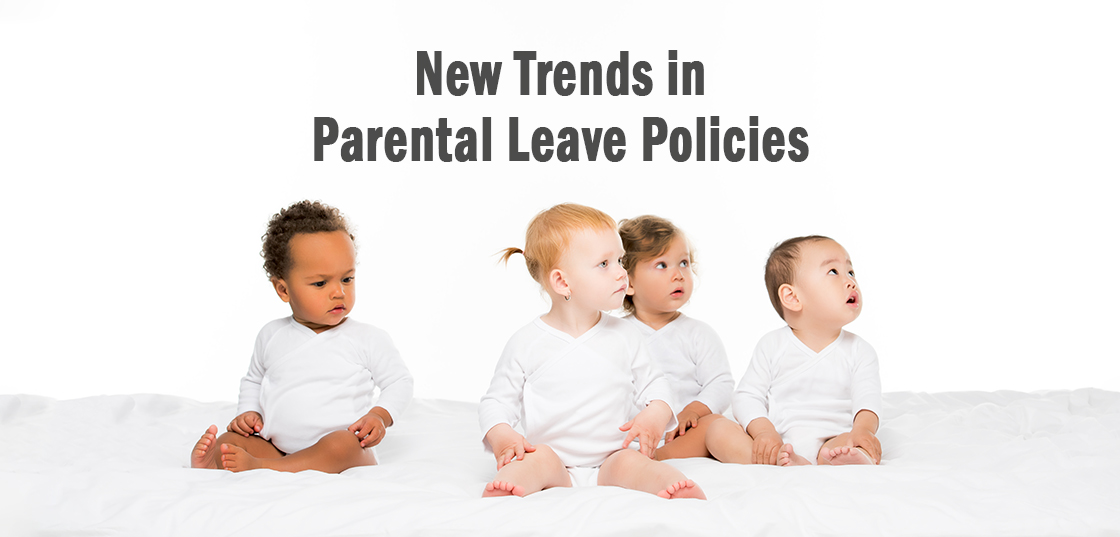With Mother’s Day around the corner, we can think of no better way to support the mothers in our lives (and our workforce) than making sure our parental leave policies are in touch with the needs of modern families. If you’re thinking of doing just that, you’re not alone. According to Working Mother, 2018 could see a record number of companies announcing increased paid parental leave policies in the U.S.
Is 2018 the year to give your parental leave policy an upgrade? Here are a few trends we’ve noticed amongst companies who recently announced they’re stepping up their game:
Calling All Parents!
Today’s policies are more inclusive, extending benefits beyond childbirth to also encompass adoption, surrogacy, or even new guardianship and foster care. This shift is reflected in a change to the lexicon, from “birth mother” to the more gender-neutral term, “primary caregiver.”
- Etsy implemented a much-lauded gender-blind parental leave policy, which provides 26 weeks of paid leave to all new parents and can be taken over the course of two years.
- Rio Tino, an international mining company, has rolled out a new minimum of 10 weeks 100% paid parental leave for primary caregivers in the U.S., regardless of gender, following birth or adoption.
- Cisco has updated its previous plan, which offered four weeks’ leave for new mothers, to a gender-neutral policy extending 13 weeks of full paid leave to any primary caregiver.
- DocuSign has expanded paid parental leave to six months for all primary caregivers, whether through birth, adoption or surrogacy.
Recognizing the Family Unit
Some of the latest companies to update their parental leave policies didn’t stop at extending paid benefits for primary caregivers, but also extended leave options for secondary caregivers, such as fathers and adoptive partners.
- IBM increased paid leave to 12 weeks off (double the previous benefit of six) for fathers and adoptive parents.
- Morgan Stanley announced that the company is boosting its one-week paid leave policy for non-primary caregivers to four weeks.
- Wal-Mart now offers full-time employees six weeks’ paid parental leave. Previously, the “other” parent was not eligible for paid leave.
Paid Leave for Hourly Workers
Paid parental leave is a benefit usually reserved for full-time, salaried workers. But leading-edge companies are breaking that mold to accommodate their front-line employees, particularly in service-oriented industries.
- Starbucks recently announced a new fully paid six week leave policy for hourly workers, full- or part-time, and regardless of gender.
- Lowe’s now offers 10 weeks paid maternity leave and two weeks’ paid paternity leave to its retail workforce, plus adoption assistance. Previously, Lowe’s offered no paid leave for new parents.
- New Seasons Market, a West coast grocery chain, became one of the first in its industry to provide paid parental leave to eligible retail staff. Workers now receive four weeks of paid leave regardless of gender for birth, adoption, guardianship or foster placement.
NEED A LITTLE HELP REVISING AND COMMUNICATING YOUR PARENTAL LEAVE POLICY?
We have lots of ideas! Write On Target, Inc. is a full-service HR communications agency specializing in strategic, creative communications. We work as an extension of your team to simplify complex information for you and your organization’s employees nationwide. From new policy/program rollouts to total rewards statements, and from new hire orientations to open enrollment campaigns — our team of pro strategists, writers and designers do it all. Whether you’re looking for a little extra help or a fully outsourced solution, Write On Target is your experienced and cost-effective partner for all your HR communications needs.
Sources: Working Mother magazine



